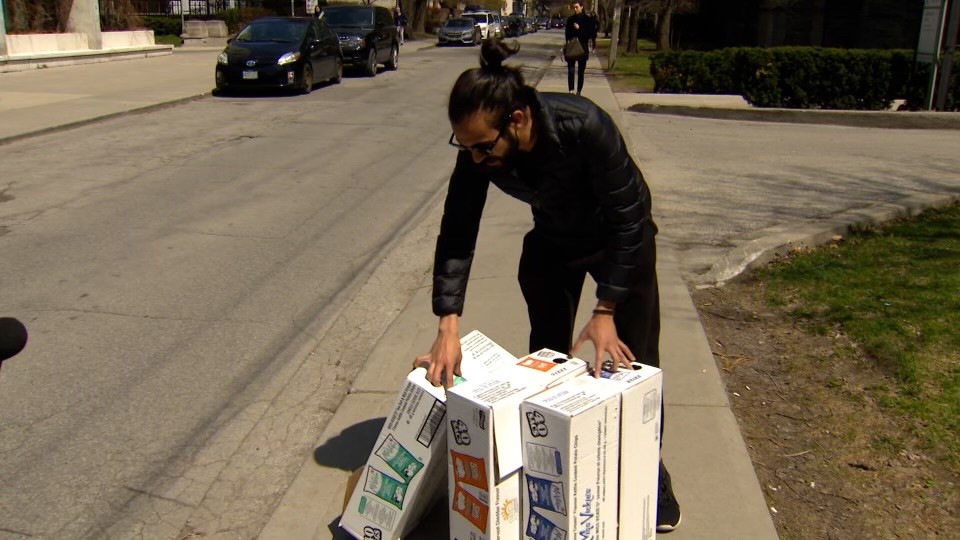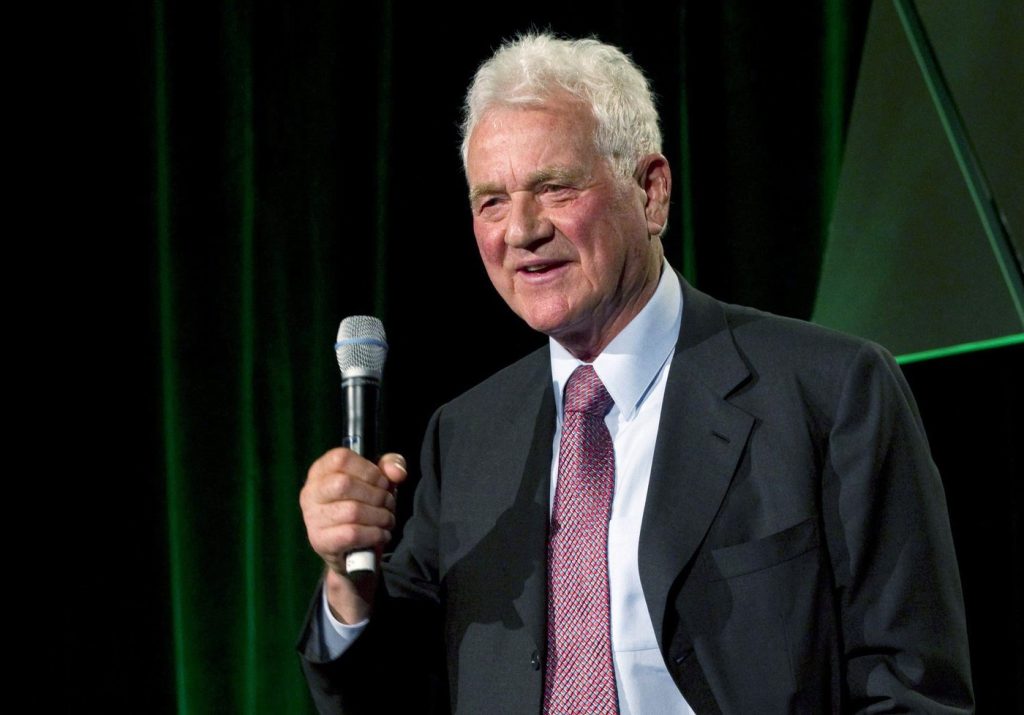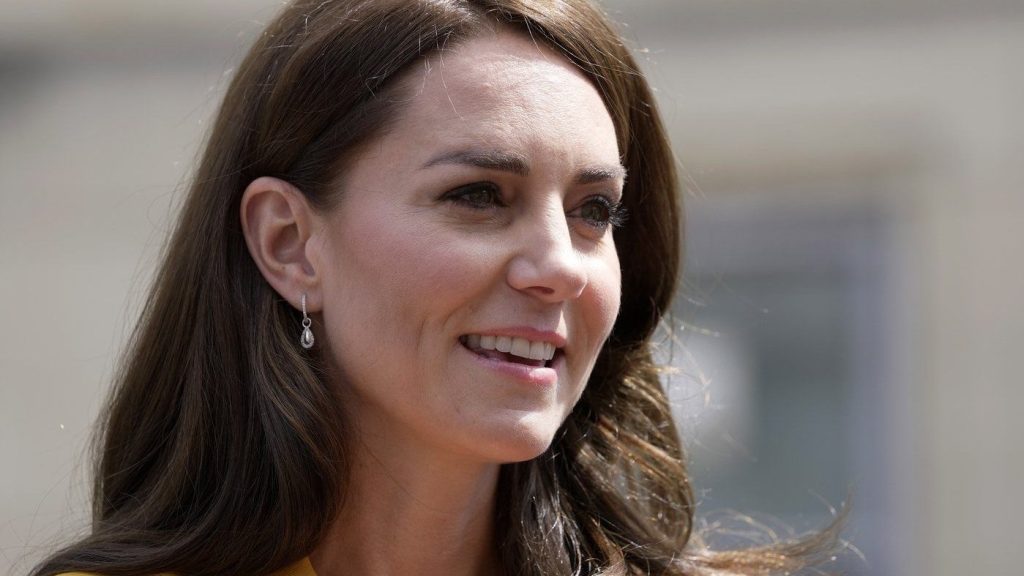U of T students leaving behind thousands of leftover meal plan dollars
Posted April 29, 2022 2:21 pm.
Last Updated April 29, 2022 3:31 pm.
University of Toronto students are packing their bags and heading home after another school year, but many are leaving thousands of meal plan dollars behind.
Several people have reached out to CityNews to share how they are unable to receive a refund of their meal plan dollars despite having a significant amount leftover at the end of the year.
Students who live in residence are required to purchase a meal plan at a minimum cost of $5,200. The plans go up to $6,300.
There are seven colleges with dining halls associated with the University of Toronto. Students say the rules are inconsistent between the colleges and they’re given few to no options with what do with the leftover money at the end of the year.
Thomas Latendresse is finishing up his first year at University of Toronto on New College but won’t be returning as he is transferring to the University of Montreal for his second year.
Two weeks ago, when he checked his meal plan balance, there was $1,800 still left.
Because the only option for those on New College is to convert the meal plan dollars into “TBucks” for the following year, which can be used at various food spots on campus or for textbooks, he is out of luck.
“What we had to resort to doing is buying food in bulk because they didn’t allow for refunds, and they didn’t really allow for any leniency due to COVID or anything,” said Latendresse. “So a lot of the people I knew were either buying food that they knew they wouldn’t be able to eat in bulk just to not let it go to waste because at the end of the year, they would just lose it.”
He has spent $1,500 in the last two weeks buying food in bulk, like 24-packs of pop and bags of chips, to not waste his money.
“I was really desperate,” said Latendresse. “I was kind of scandalized by the fact that we wouldn’t be able to do anything with the money.”
Latendresse said he actually spent a full month during the school year at home and not using his meal plan as the school encouraged students not to come to campus during the fourth wave of the COVID-19 pandemic when Omicron cases were spiking.
He said considering this, the school should be more lienent when it comes to refunds. “Especially with COVID, [they should show] a leniency towards refunds, just recognizing the situation that students are in that they can’t spend this money and that they’re just going to lose it and I find that kind of the bare minimum.”
Those on Victoria Campus don’t even have the option to convert their leftover meal plan dollars to “TBucks.”
Piper Hays, a first-year student in History and Classical Studies on Victoria Campus, said she has over $2,000 left on her meal plan.
“Two-thousand dollars is a quarter of my tuition. I don’t know where it’s going. I don’t know what it’s being used for after I leave residence after first year,” she said.
Hays said the reason she has so much leftover is after a few weeks on campus, the food available started to make her feel sick, so she spent much of the year cooking for herself. And she is not alone in having money leftover.
“Most people I know have at least $500 left in their meal plan money and we have three days left, our meal plans service ends tomorrow [Friday] night.”
She adds the thing that bothers her most is she doesn’t know where the money is going. Hays and a few other students attempted to buy multiple meals to hand them out to the homeless population, but were unable to because Victoria College limits the number of meals you can purchase to two at a time.
“You’re limited to buying six meals a day, even though we have enough money to buy like 20 or 30,” said Hays.
Unlike those at New College, they are also not allowed to buy non-perishable food in bulk in order to use up some of their remaining dollars.
Hays adds if she had the choice of whether to purchase a meal plan or a smaller meal plan, she likely only would’ve put $1,000 towards it.
“If there was an option to pay maybe $1,000 and have $1,000 worth of meal plan money, that would be good for days that I don’t have time to cook,” said Hays. “[Otherwise] I would definitely not be purchasing one. Just because the food is just so bad.”
Sophie Choy, another first-year student at Victoria College, said she will be leaving behind $1,300.
“I’m here until May 1, my options are basically just to buy three meals a day, and that will be it and then the rest of that money will end up just going to waste.”
“I know people who have over two-thousand dollars, I have one or two friends who used up their entire meal plan but that required a lot of planning, giving away food or food waste,” explained Choy.
Choy told CityNews she, along with many other students, have vocalized their concerns with what happens to their money.
“Victoria College especially has been particularly slow to divulge the information about where the money is being used for their meal plans because a lot of students have vocalized that they’re not okay with this amount of money and this amount of food going to waste and not benefiting the students.”
Hays adds she is aware that the Victoria College Student Union attempted to address the quality of the food available but have not addressed what happens to their leftover money.
“The Victoria College Student Union has sent letters to Burwash about the fact that we can’t choose what we eat because food comes pre-portioned,” said Hays. “But I don’t know if anything’s being done about the fact that we just don’t get our money back.”
Choy said she believes the university should really be prioritizing the student voice when it comes to meal, especially considering it is a basic necessity.
The last day of school, CityNews spotted a number of students purchasing food in bulk.
Eli Ramraj, a student on scholarship, said he purchased $600 worth of chips and drinks so far, and he still has a balance on his meal plan.
Another student says she spent $400 on chips and pop, and has a balance of $2,000 remaining.

University of Toronto students buy food and drinks in bulk to spend their leftover meal plan dollars. CITYNEWS/Faiza Amin

University of Toronto students buy food and drinks in bulk to spend their leftover meal plan dollars. CITYNEWS/Ken Townsend
The University of Toronto told CityNews in a statement that students are able to contact Food Services or their Residence Office to discuss their meal plan and they are “encouraged to use their meal plans.”
Any student experiencing financial difficulties are “encouraged to contact the Registrar’s Office to discuss their financial needs and the financial assistance available to support them,” read the statement.
The university also said “some” of the residential meal plans offer students the ability to carry over unspent dollars to be used in the future, but there are limits attached to the amounts as “residential meal plan income is used to cover the costs of operating the dining halls (staffing, facilities, equipment maintenance). These fixed costs are incurred regardless of the amount of food that is consumed.”
They also said students who arrived in residence later than normal had their meal plans pro-rated to reflect their actual arrival date.
CityNews asked just how much money students are leaving behind on these meal plans, but the school did not provide a response to that question.








